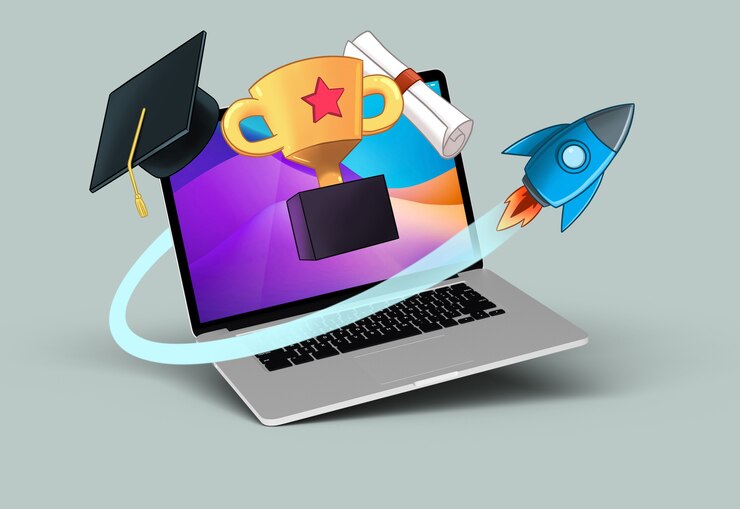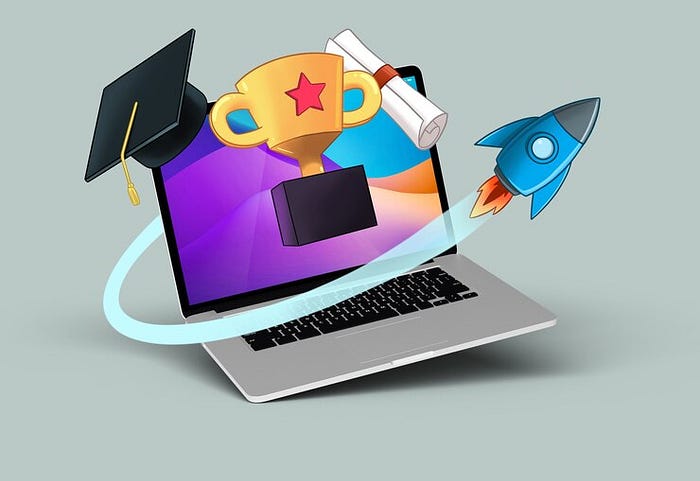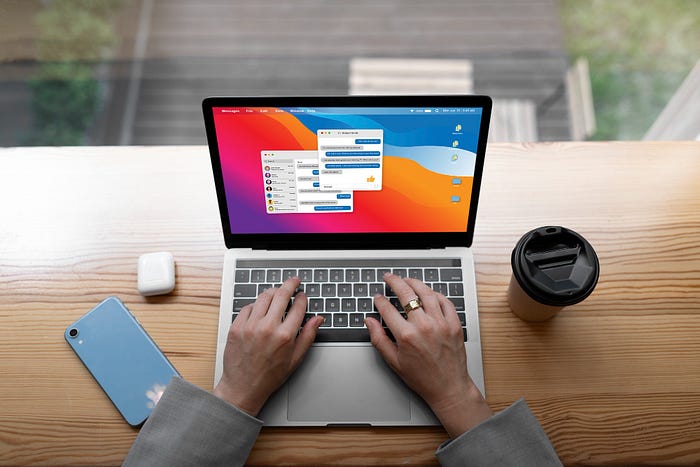Top eLearning Accessibility Tools Every Developer Should Know
 vinay Bommena
vinay Bommena
In the world of digital education, accessibility is no longer just a “nice-to-have” feature — it’s a necessity. Accessible eLearning development focuses on ensuring that all learners, regardless of their physical, sensory, or cognitive abilities, can engage with and benefit from online learning experiences. This makes accessibility a key priority in the design and development of eLearning content. To achieve this, various tools and technologies have emerged that help developers create inclusive, engaging, and fully accessible learning experiences. This article explores the top tools and technologies for accessible eLearning development and how they contribute to creating a more inclusive learning environment.

What Is Accessible eLearning Development?
Accessible eLearning development refers to the creation of digital learning content and platforms that are usable by people with various disabilities, including visual, auditory, cognitive, and physical impairments. This means ensuring that content can be easily navigated and understood, regardless of how a learner interacts with technology. Adhering to guidelines such as the Web Content Accessibility Guidelines (WCAG) ensures that content is designed with accessibility in mind, from text to multimedia and interactive elements.
Why Tools and Technologies Are Essential for Accessible eLearning
Creating accessible eLearning content requires more than just good intentions; it involves using the right tools and technologies to meet accessibility standards and guidelines. These tools help developers test content for compliance, create accessible multimedia, and ensure that eLearning platforms provide an optimal experience for all users.
The following sections explore the best tools and technologies available to support accessible eLearning development.
Top Tools and Technologies for Accessible eLearning Development
1. Articulate Storyline 360
Articulate Storyline 360 is a popular eLearning development tool that supports accessible design. It offers features that help ensure compliance with accessibility standards, such as the ability to create accessible interactions, use alternative text for images, and enable keyboard navigation.
Key Features:
Built-in support for screen readers like JAWS
Keyboard navigation for learners with mobility impairments
Closed captioning and alt text for visual content
Supports WCAG 2.1 guidelines
Articulate Storyline 360 is ideal for developers looking to create interactive and engaging eLearning courses while meeting accessibility requirements.
2. Adobe Captivate
Adobe Captivate is another leading eLearning authoring tool that supports accessible eLearning development. It allows developers to create responsive eLearning content that works across different devices while adhering to accessibility standards.
Key Features:
Closed captioning for video and audio content
Accessibility text options for screen readers
Keyboard shortcuts and navigation support
Supports WCAG and Section 508 compliance
Adobe Captivate’s powerful capabilities make it a top choice for creating accessible, mobile-friendly eLearning content.
3. Camtasia
Camtasia is a video editing and screen recording software that plays an essential role in creating accessible multimedia content. Video-based learning can be challenging for some learners, but Camtasia offers features to ensure videos are accessible to all.
Key Features:
Closed captioning tools for adding captions to videos
Easy-to-use video editing interface
Transcripts for audio content
Interactive quizzes and screen reader-friendly elements
For developers focusing on video content, Camtasia provides the tools to make videos accessible to learners with hearing or visual impairments.
4. ReadSpeaker
ReadSpeaker is a text-to-speech tool that allows developers to add voice functionality to their eLearning content, making it accessible to learners with visual impairments or reading difficulties.
Key Features:
Converts text to high-quality speech in real-time
Supports multiple languages and dialects
Seamlessly integrates with Learning Management Systems (LMS)
Adjustable reading speed for personalized user experience
ReadSpeaker enhances accessibility by providing learners with the option to have on-screen content read aloud, improving comprehension and usability.
5. EquatIO
EquatIO is a tool designed for creating accessible math content. It allows learners with disabilities to interact with mathematical equations and symbols through a variety of input methods, such as voice, handwriting, and keyboard.
Key Features:
Voice input for writing equations
Math-to-speech functionality
Creates accessible math content for screen readers
Integrates with popular tools like Google Docs and Microsoft Word
EquatIO is particularly useful in STEM-focused eLearning environments where mathematical content needs to be made accessible to learners with disabilities.

6. Grackle Docs
Grackle Docs is an add-on for Google Docs and Slides that checks for accessibility issues and helps developers create documents and presentations that meet accessibility standards.
Key Features:
Automated accessibility checker for documents and presentations
Provides step-by-step guidance on fixing accessibility issues
Ensures compatibility with screen readers and assistive technologies
Generates accessible PDF documents
Grackle Docs simplifies the process of ensuring that Google Docs and Slides are fully accessible, making it a valuable tool for educators and developers using these platforms for eLearning.
7. WAVE (Web Accessibility Evaluation Tool)
WAVE is a free online tool that helps developers check the accessibility of web-based eLearning content. It identifies accessibility issues and provides feedback on how to improve the content to meet standards such as WCAG.
Key Features:
Highlights accessibility errors and warnings in web content
Provides suggestions for improving accessibility
Allows for real-time testing and evaluation of web pages
Supports WCAG 2.1 and Section 508 compliance
WAVE is an indispensable tool for developers who want to ensure that their web-based eLearning content is accessible to all users.
8. JAWS (Job Access With Speech)
JAWS is a screen reader software that enables visually impaired learners to access digital content. Developers can use JAWS to test their eLearning materials and ensure compatibility with screen readers.
Key Features:
Converts text and other on-screen elements into speech or Braille
Supports various file formats, including PDF, Word, and HTML
Provides speech output for website navigation
Offers customizable speech and Braille settings
Testing eLearning content with JAWS ensures that learners using screen readers can access and interact with the material effectively.
9. AXE Accessibility Testing Tool
AXE is a robust accessibility testing tool that helps developers identify and fix accessibility issues in web content. Available as a browser extension, it can be used to check for WCAG compliance during the development process.
Key Features:
Identifies accessibility issues in real-time
Provides detailed reports with actionable recommendations
Integrates with popular development environments
Supports WCAG 2.1 and ARIA (Accessible Rich Internet Applications) standards
AXE is ideal for developers who need a comprehensive tool to ensure their eLearning websites and platforms meet accessibility standards.
10. VoiceOver
VoiceOver is Apple’s built-in screen reader for macOS and iOS devices. It enables developers to test the accessibility of eLearning content on Apple devices and ensure a seamless experience for learners using these platforms.
Key Features:
Converts text and on-screen content into speech for visually impaired users
Allows users to navigate websites, documents, and apps via voice commands
Provides feedback on gestures and interactions
Built into all Apple devices, ensuring widespread availability
VoiceOver is a valuable tool for developers looking to ensure that their eLearning content is accessible on Apple devices, which are popular among learners.

Conclusion
Accessible eLearning development is essential for creating inclusive educational experiences that cater to all learners, including those with disabilities. By using the right tools and technologies, developers can ensure that their eLearning content is accessible, engaging, and compliant with international standards. Whether it’s providing closed captions, making content screen reader-friendly, or enabling keyboard navigation, these tools empower developers to create eLearning platforms that break down barriers and provide equal learning opportunities for everyone.
Incorporating these tools and technologies into the eLearning development process not only benefits learners with disabilities but also improves the overall learning experience for all users, fostering inclusivity and enhancing educational outcomes across the board.
Subscribe to my newsletter
Read articles from vinay Bommena directly inside your inbox. Subscribe to the newsletter, and don't miss out.
Written by
